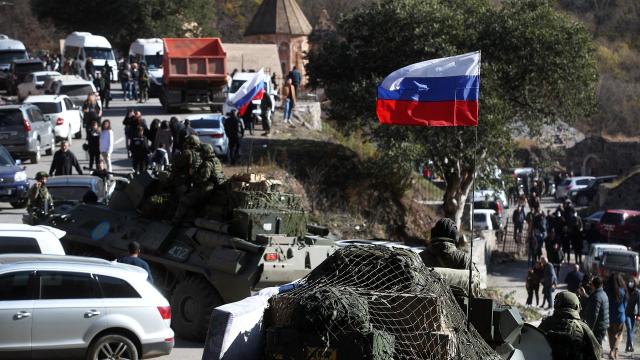The units will be engaged in maintaining the ceasefire and resolving humanitarian issues
The final structure of the Interagency center for humanitarian response in Nagorno-Karabakh was approved on November 18, sources of the Russian defense Ministry told Izvestia. Earlier in the day, the Federation Council unanimously approved President Vladimir Putin's proposal for a long-term (five-year) peacekeeping mission in the NKR. According to the military Department, it is the MCGR that will become the main Executive body of the peace agreements signed by the parties to the conflict on November 9.
Five divisions
The number of MCGRS will be about 1.2 thousand people. In addition to military personnel, it will also include civilian specialists, employees of the border service of the FSB of Russia and the Ministry of emergency situations, sources in the defense Ministry told Izvestia.
The interdepartmental center will cover the entire range of problematic issues and ensure not only the return of refugees, but also normal life in its area of responsibility. The IGC will have five specialized interaction centers. One of them will control the separation of the warring parties and monitor the implementation of the ceasefire. The second is humanitarian operations in Nagorno-Karabakh. Another will be responsible for the accessibility and maintenance of roads and transport routes agreed upon by the parties. The functions of the others are still being clarified, the sources added.
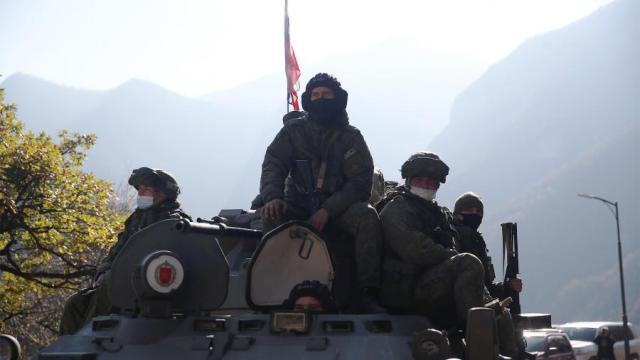
Russian peacekeeping troops arrive in Nagorno-Karabakh, November 14, 2020
Image source: Photo: IZVESTIA/Zurab javakhadze
"Russian peacekeepers have accumulated vast experience over the past three decades," military expert Vladislav Shurygin told Izvestia. — They participated in operations in conflict zones in the former Soviet Union, they had to perform the same tasks in Chechnya. We should not forget that the Russian military was involved in peacekeeping missions abroad as observers. In recent years, our center for reconciliation of warring parties has been successfully operating in Syria. They have accumulated a lot of experience in working in very difficult conditions.
All this practice shows that it is not enough just to stand between the warring parties, the expert said. We need to solve the multiple humanitarian problems that any military conflict leaves behind, and work with the local population. That's what civil agencies are for. But you can't do without the military, said Vladislav Shurygin. Peacekeepers must always demonstrate that they are a serious force to be reckoned with by all parties.
Return of refugees
According to the Russian military, as of November 18, the ceasefire is observed along the entire line of contact. This information is confirmed in both Yerevan and Baku.
In addition to permanent stationary observation posts of the peacekeeping forces in Nagorno-Karabakh, temporary ones will also be deployed if necessary. They will be put up in case of conflict situations or when they are threatened to be created. After the danger is eliminated, the posts will be closed.
On Wednesday, November 18, the military Department announced the removal of seven such temporary posts in the Lachin corridor. During the week of their existence, they provided work on clearing the 28 km long road from damaged equipment and evacuating the bodies of the military who died there. Sappers of Russian peacekeepers cleared the area of unexploded ordnance.
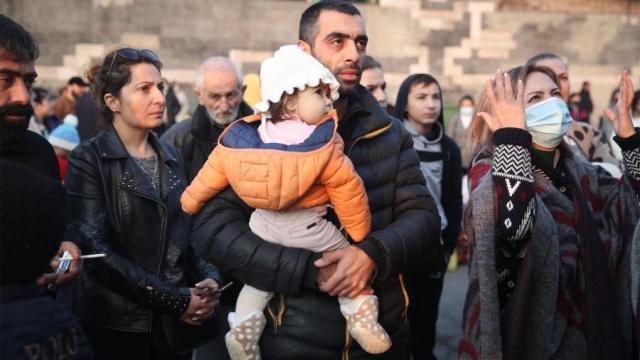
Refugees return to Nagorno-Karabakh, November 18, 2020
Image source: Photo: IZVESTIA/Zurab javakhadze
One of the two strategic transport corridors connecting Nagorno-Karabakh with the territory of Armenia was blocked during the Azerbaijani army's offensive on the city of Shushi. Since Tuesday, local residents have been able to use this route again.
Over the past days, three columns of buses with refugees arrived in Stepanakert from Armenia, accompanied by Russian peacekeepers and military police. People are returning to the city, which they had to leave due to artillery attacks and the approach of the war zone to it.
Military peacekeepers
The first planes with the Russian military arrived in Armenia within a few hours after the beginning of the truce declared on November 10. A day later, the column entered Stepanakert and began setting up permanent and temporary observation posts.
By November 18, two battalion tactical groups (Btgr) of peacekeepers of the 15th separate motorized rifle brigade have already been transferred to Nagorno-Karabakh out of the limit of 1,960 military personnel, 90 armored personnel carriers, 380 units of automobile and special equipment stipulated by the agreement.
During the first week, Il-76 and an-124 Military transport aircraft of the Russian aerospace forces arrived at Yerevan airfields more than 170 times. There are 20-25 daily flights between the capital of Armenia and Ulyanovsk, located 1.6 thousand km away.
The first Btgr is located in the Northern part of the unrecognized Republic. Eleven permanent observation posts are being set up there. The headquarters will be located in the city of Mardakert. The military will also take control of the road connecting Stepanakert with Yerevan.
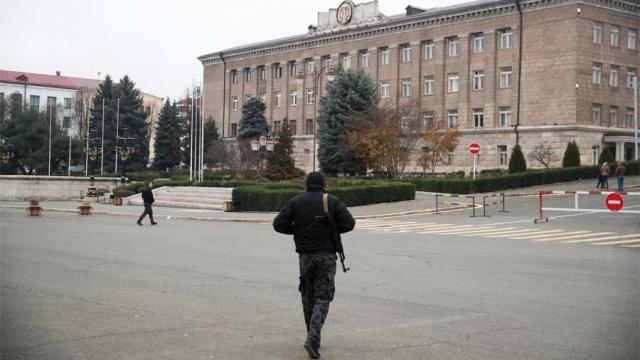
Stepanakert, Nagorno-Karabakh
Image source: Photo: IZVESTIA/Zurab javakhadze
The second Btgr is responsible for the area where the most tense situation has developed. Its area of responsibility includes Stepanakert, where the main headquarters of the Russian group will be located, the Lachin corridor, as well as roads around Shusha. There, the peacekeepers will directly border the Azerbaijani military on the contact line.
15 separate motorized rifle brigade arrived with its light reconnaissance drones "Orlan-10"and" Aileron-3". They are used to monitor the situation and monitor the implementation of the ceasefire agreements.
In addition, the Russian air group in Armenia is also being strengthened. A total of eight Mi-8 military transport and mi-24 attack aircraft were delivered there. They will also be used for the benefit of the peacekeeping operation.
The Russian military is stationed in the conflict zone for five years. Their mission will be automatically extended for the next five years, if Armenia or Azerbaijan do not declare the termination of the agreement six months before its end. The final fate of Karabakh remains politically unsettled. Azerbaijan insists on the need for its full control over the territory of the unrecognized entity.
Power in the law
According to Izvestia's interlocutors, the President has the right to promptly introduce peacekeeping forces to territories outside the Russian Federation without the consent of the Federation Council. However, a permit is required for long-term deployment, which in this case is a five-year peacekeeping mission abroad. In this regard, a justification was prepared for the Federation Council.
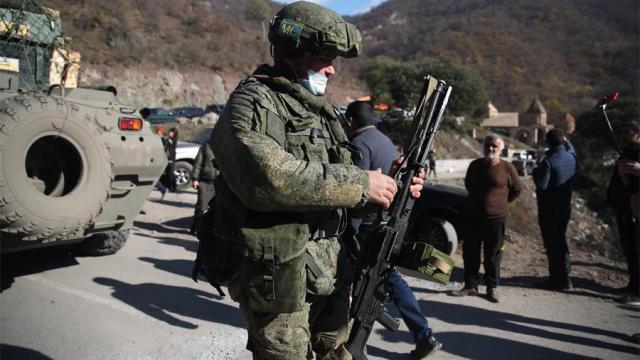
Employee of the Russian peacekeeping forces
Image source: Photo: IZVESTIA/Zurab javakhadze
The head of state received the right to quickly introduce a peacekeeping contingent in 2009 by a special decision of the Federation Council after the war with Georgia in August 2008. Then the lives of Russian peacekeepers were in danger. The last time Vladimir Putin applied for permission from the SF to deploy a military contingent on the territory of another state was in 2015. This was done in preparation for the operation in Syria.
Anton Lavrov
